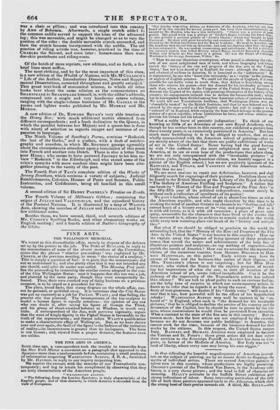The Royal example has made multitudes of young horsewomen ;
and female equestrianism, till lately out of fashion, is now again all the rage. A graceful figure well mounted, with the round black hat, succinct bodice, and full (lowing skirt of the riding- habit, is a pretty sight, certainly ; but whether the exercise is peculiarly feminine, or even so healthful for women as is sup- posed, may be questioned. The Young Lady's Equestrian Manual takes butts these points for granted, of course; and very picturesque and becoming the lair riders hook in the various points ol view in which they are represented in the numerous ele- gant wood-cuts that illustrate the little volume. The trea- tise will be useful to such as desire to dispense with the services of a professional riding-master. The introductory sketch of the progress of female equestriaeism and the origin of the side-saddle is not uninteresting. The drat side-saddle was a chair or pillion ; and was introduced into this country by ANN of Bohemia. Afterwards, a single crutch added to the common saddle served to support the knee of the advanced leg ; this was moveable, and might be changed so as to vary the position of the rider : the double moveable crutch succeeded, and then the crutch became incorporated with the saddle. The old practice of riding astride was, however, practised in the time of CHARLES the Second, and even later : horsewomen then wore doe-skin pantaloons and riding-coats.



























 Previous page
Previous page